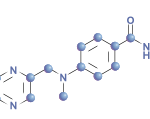Thus, in addition to the proven efficacy of this class of treatment, several studies to date have investigated the effects of dose reduction and withdrawal of treatment with TNF inhibitors. For example, a Cochrane Review article from 2019 noted that fixed‐dose reduction of anti‐TNF treatment after at least three to 12 months of low disease activity results in similar levels of activity and function as continuation of the standard dose.7 Such data do not exist for Jakinibs, and thus clinicians are left without guidance for future planning of dose-reduction strategies.
Dr. Weinblatt also explained the entire safety profile for TNF inhibitors is well described, and it is quite clear which adverse events to screen for and seek to prevent. He noted that some of these potential issues, such as exacerbation of demyelinating diseases, such as multiple sclerosis, took time to appreciate in clinical trials and real-life practice, and that we may learn unanticipated events arise in the use of Jakinibs.
Similarly, much more is known at present about the safety of TNF inhibitors in pregnant patients. In fact, the ACR published a guideline this year that conditionally recommends continuing TNF inhibitor therapy prior to and during pregnancy in patients with rheumatologic disease, with a preference for certolizumab.8
Dr. Weinblatt also raised important questions about the potential toxicities associated with Jakinibs. Not only does the issue of VTE exist, but so does the potential for increased major adverse cardiovascular events (MACE).9 This leads to a series of questions that so far remain unanswered: Can women with RA safely take oral contraceptive pills or receive hormone replacement therapy while on treatment with a Jakinib? Should obese patients avoid these medications given the association of elevated body mass index (BMI) with an increased risk of VTE? Do we need to screen patients with RA for the presence of antiphospholipid antibodies prior to initiating Jakinib treatment? These and many other queries will need to be investigated in the coming years, and the answers at present are not clear.
Dr. Weinblatt concluded his argument by noting that biosimilar options now exist for several TNF inhibitors. Although these biosimilars have not achieved widespread use to date in the U.S., they have the potential to represent a safe, less expensive option for patients who have trouble affording a brand name TNF inhibitor.
Researchers at the RAND Corp. estimated that biosimilars may reduce direct spending on biologic drugs by up to $54 million by 2026.10 No such options exist for Jakinibs and are unlikely to be produced in the near-term future.
Conclusion
In all, the debate was a fantastic display of mastery of the clinical data on this subject, thoughtful insights from two outstanding clinicians and a wonderful example of how critical reasoning can be used to inform discourse on the most important subjects in rheumatology.



